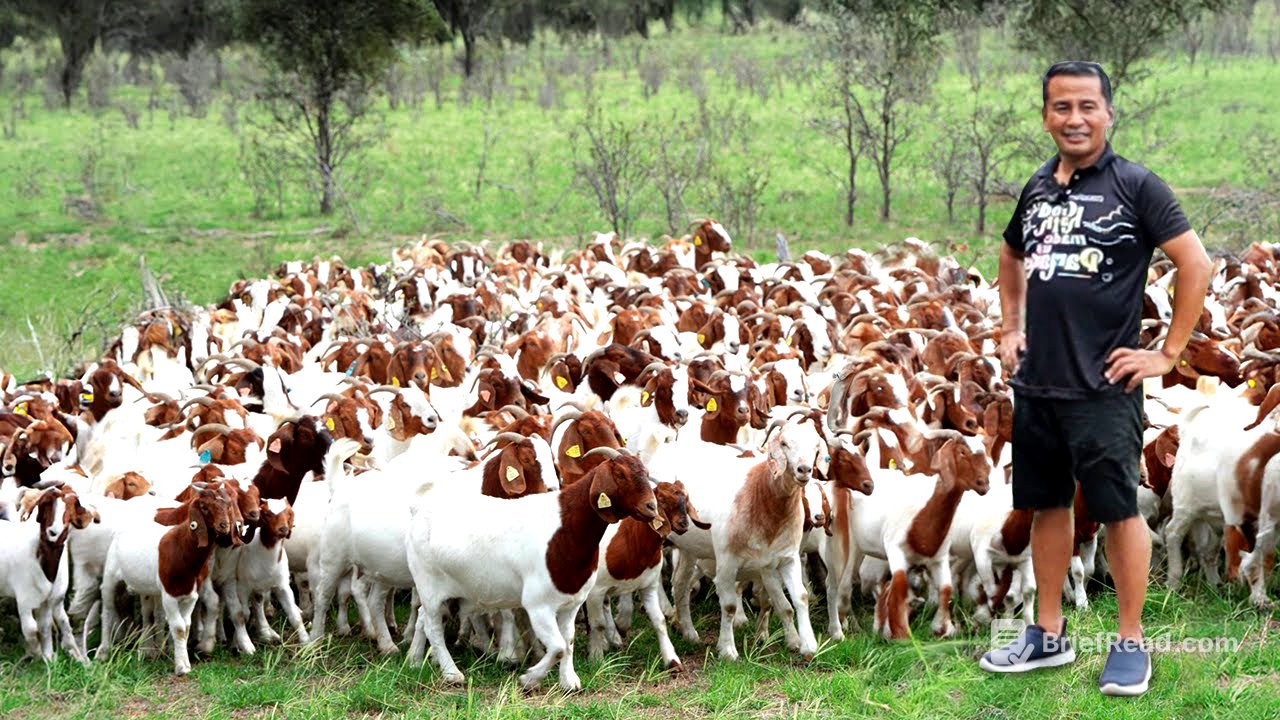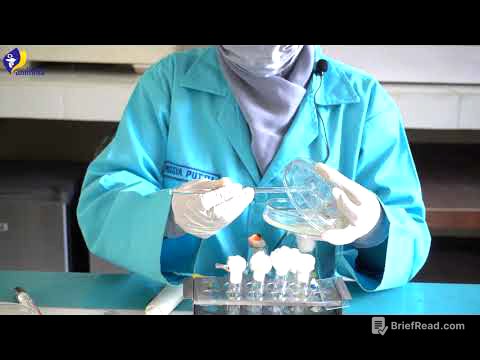TLDR;
This video is about goat farming, highlighting its potential as a low-capital, high-reward endeavor, especially with a readily available food source. The video shares practical tips for successful goat farming, including cleanliness, strategic reassignment of goats based on their needs (separating territorial males and mothers with babies), and the importance of iron injections for young goats. The farmer expresses his goal to reach 100 goats by 2024 and touches on aspects like breeding, the preference for horned goats in the local market due to Muslim traditions, and the plan to introduce milk goats for additional income.
- Goat farming requires low capital if you have a food source.
- Cleanliness and strategic goat reassignment are important.
- Iron injections help young goats.
Introduction to Goat Farming [0:20]
The speaker introduces goat farming as a recommended farming endeavor due to its low capital requirements. The initial investment is primarily for housing, with ongoing costs minimized by having a good food source. The speaker shares his experience of successfully managing a goat farm for 6 to 7 months, emphasizing that goat farming is best when there's a readily available food source.
Essential Tips for Goat Farming [1:17]
The video transitions into providing tips for successful goat farming, starting with the importance of cleanliness. The speaker highlights the use of iron injections for baby goats to boost their strength and survival. The video demonstrates the reassignment of goats, moving a territorial male named Rudy to his own space and grouping mothers with babies together in a larger cubicle.
Goat Reassignment [2:57]
The speaker practically demonstrates the reassignment of goats within the farm. A mother goat is moved to a bigger space for comfort, and Rudy, the territorial male, is relocated to an exclusive cubicle since it is not yet breeding season.
Breeding and Prolificacy [5:07]
The speaker notes the farm's success in producing six kids from five mamas in a short period, attributing it to the readily available food source and proper housing. He expresses surprise at the high percentage of male offspring and invites viewers to share insights on this phenomenon. The goats are seen eating grass, and the speaker mentions his decision not to dehorn them.
Market and Future Plans [7:09]
The speaker explains that most of the goats are first-time mothers, except for a brown goat that has delivered babies three times. He clarifies that these native goats are not for milk production, which is why he plans to acquire Ang lovian breeds for selling goat milk. His goal is to have 100 goats by 2024, driven by the belief that consistent effort turns dreams into reality.
The Life of a Goat Farmer [9:13]
The speaker emphasizes the low maintenance and cost-effectiveness of goat farming due to the free availability of grass. He encourages viewers with unused land to consider converting it into a goat farm, contributing to food security. The video concludes with a call to subscribe for regular updates.









